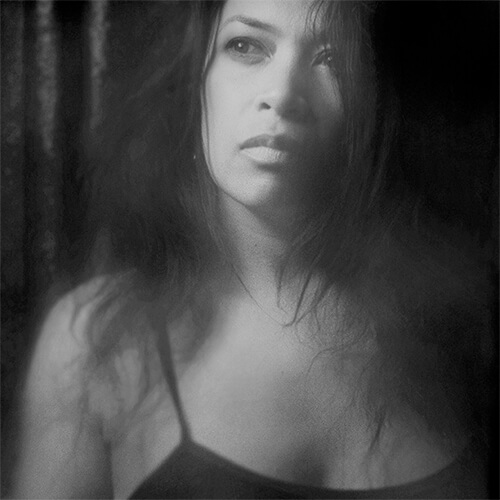Mariska Karto is an artist/ fine art-photographer born in Suriname (South-America) and raised in the Netherlands.
In this age of rapidity and technical development, in which human is exposed to impersonal detachment of current technical era, Mariska Karto creates the vulnerable and intensive dimensions of human feelings and emotions. This all happens in the dreamworld she has created with her technique in which past and present have found their way to each other, in this era of transformation.
She talks to you in a language without words using symbolism in a dreamworld of historic paintings atmosphere.
Mystique, tragic and erotic are the keywords for her work. Her work are like old stories escaped from an old world of eternal dreams, eternal emotions and eternal feelings that existed for hundred of years but still repeats themselves as in a pattern of an earthy rite, in this new modern contemporary era.
Her works are like poems and thoughts, restless ones but are also like whispers of thoughtless experiences, floating in a centuries long movement in time.
Artist Statement
"My work is based on a period in which photography did not exist, It was not until the end of the 18th century that it was invented. As a result of this, people thought that photography would make the art of painting disappear, especially in the post modern era, the traditional art had to make way for new technical developments. In my work I seek and found a respectful connection of technique and traditional craft through a striking contradiction.
Painters in the Baroque/renaissance time were trying to paint as true-to-life with painting-techniques and color applications. What a camera does is portray the world in its realistic colors. That’s the contradiction in my work, it’s the other way around. I shoot realistic images and through an intensive transformation process, the work is changed, true-to-life in the characteristic Baroque colors and style of that time.
Eventually, this says nothing about photography and technique, but more about the great masters of that gone era, they were able to be as realistic and accurate as possible with brush and paint the world in all its reality… That’s the great contradiction in my work, I’m leaving the visible reality of our current time, and bring the invisible realism of the past forward in my work. As a result of this, I pull away present time from its structure and then time appears to be just a definition, which slowly fades away, when current and past becomes interwoven with each other.”
More background info:
"I mix skills from different worlds together. It is a blend of skills of my (I'm originally a painter and sketcher, textiles - I was a textile artist some years ago, photography and image processing) that ultimately meets each other in this form of art.
A main factor are also social emotional influences in my life which developed how I see, learn and finally understand things in an essential (psychological) way.
All these (artistic) elements from different areas and personal influences come together in a work of mine."
